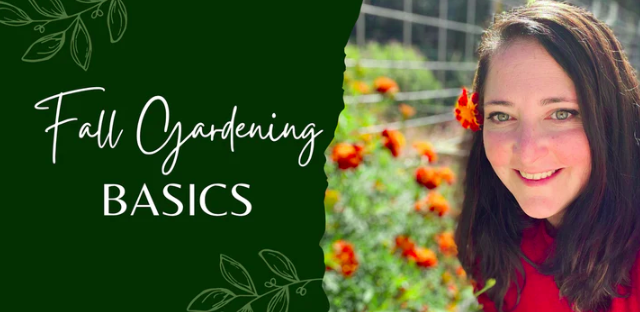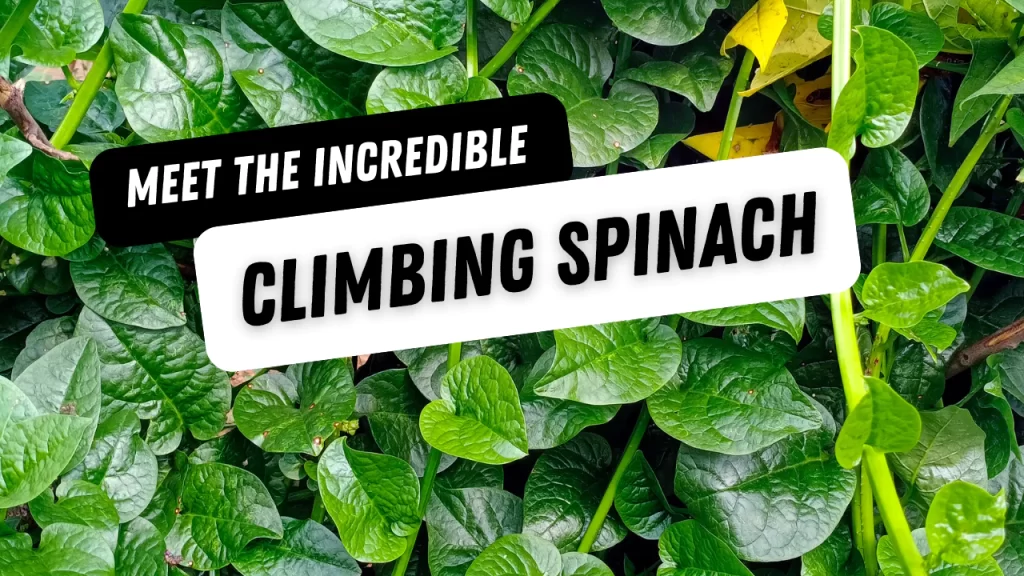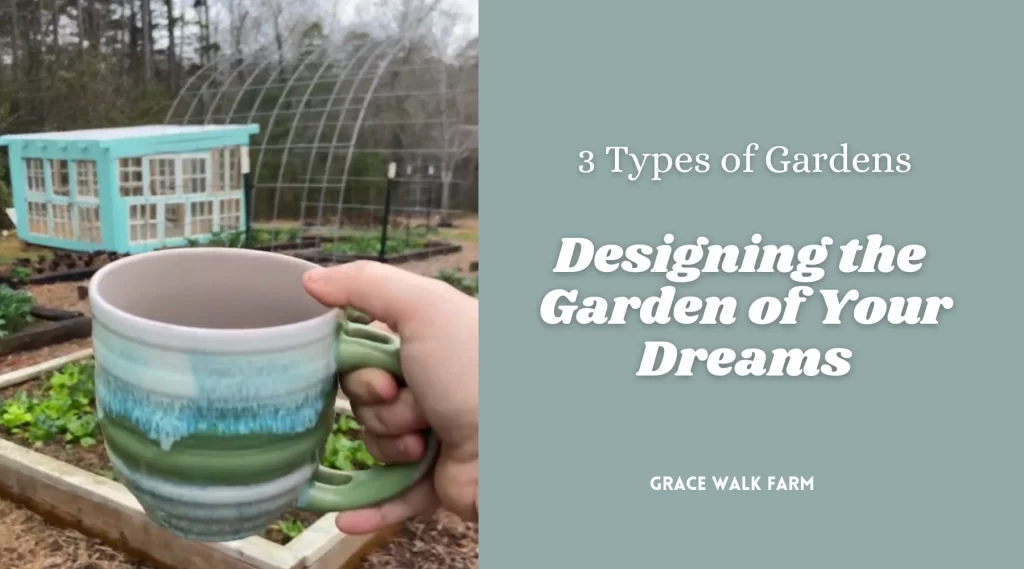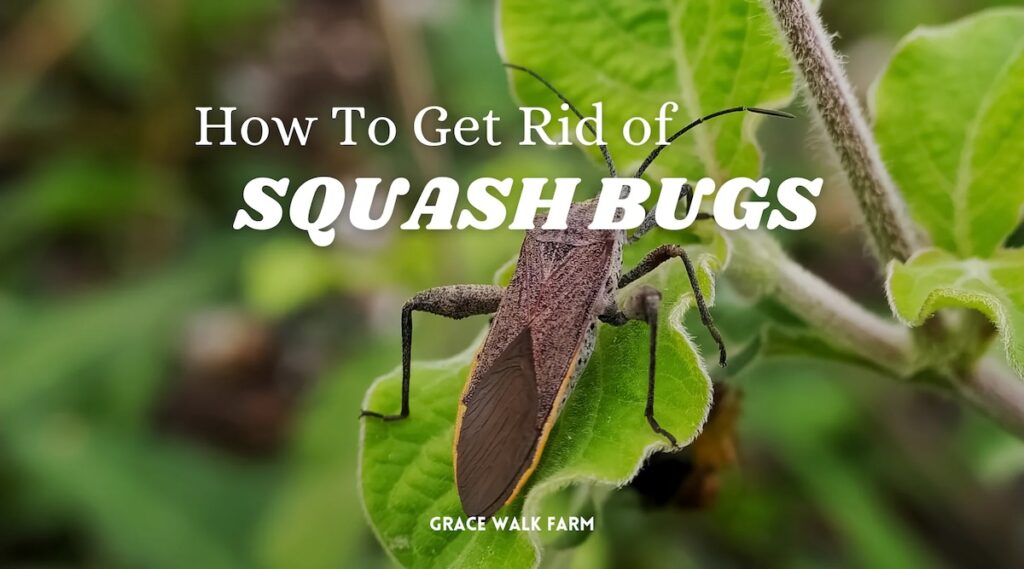As the first frosty night settles over your fall garden, you might be tempted to pack up your garden supplies and call it quits until spring. While most of us associate gardening with warm, sunny days, there is actually a lot of important work to do in the garden during the cooler months. So don’t pack away those garden gloves quite yet. Here’s a look at what to do in the garden during fall.
Welcome to Grace Walk Farm, our family homestead in western NC. We share the highs and lows of our homestead journey, in hopes that it will encourage you to grow your own food too. Click here to grab our Beginner Garden Guide for free! Join our 600K strong Instagram community of homesteaders here. Thanks for stopping by!
Plant Your Garlic
Garlic is a fun, easy plant for beginners to grow and fall is the perfect time to get started. Plant garlic bulbs (cloves) in October and cover them with a thick layer of mulch. They will grow slowly through winter, but when spring rolls around, you’ll notice things start to speed up.
If you’re planting a hardneck variety of garlic, you will start to see scapes grow around early summer. Scapes are the start of a flower head on your garlic plant and it’s best to remove them. But don’t toss them out – scapes are delicious! Try throwing them on the grill or saute them in some butter… so good! About a month after you harvest those yummy scapes, your garlic will be ready to pull up. Whether you grow hardneck or softneck garlic, a good rule is to wait until 3-4 leaves turn yellow and then you will know it’s time to dig up the garlic.
Plant Bulbs for Spring Flowers
If you find yourself wistfully looking at the neighbor’s tulips every spring, now is the time to add that same spring beauty to your own garden. Bulbs for decorative flowers like daffodils, tulips, and hyacinths should be planted in the fall. The cooler months is the perfect time to lay out a new flower bed or redesign your existing space. Choose bulbs with flowers of varying heights and bloom times to make sure you have plenty of color to enjoy in your garden when spring arrives.
Clean Out Weeds and Put Down Weed Barrier
Weed growth generally starts to slow down a bit in fall when the days are shorter and the temperatures cool. This is the perfect time to tackle spaces where the weeds got out of hand during your busy summer growing time. If you notice areas where weed pressure was particularly intense, add a layer of weed barrier to prevent problems in that area next year.
Mulch Your Garden Beds and Pathways
A lot of home gardeners mulch in the spring because that seems to be when stores are carrying the big bags of mulch on sale, but fall is actually a better time to add mulch to your garden. Think of it this way – you are putting your garden to bed for the winter. Mulch is a thick blanket to keep it warm and insulated. Mulch will also prevent those pesky weeds from creeping in and taking over the space. Empty garden beds will always become a magnet for weeds. Soil needs cover and if you don’t provide it, nature will do the job for you with weeds.
Natural mulch sources abound in the fall months and most of it can be collected for free. Crushed up leaves make a fantastic mulch for garden beds. Next time you rake, dump all those leaves onto the garden. Over the winter, they will break down and enrich your soil with vital nutrients. You can also mulch your garden with wood chips and straw – just make sure straw hasn’t been sprayed with any pesticides.
Order Seeds for Next Year
Seed companies start getting slammed with orders after the new year so fall is the perfect time to beat the crowd and put in your order for seeds. When you start looking for seeds in the fall, you will have time to browse, compare prices, and read reviews of different varieties to find the best vegetables to grow in your garden zone. If you’ve never ordered seeds online and feel a little overwhelmed, I highly recommend Hoss Tools.
Redesign Your Garden Space
If you’re dying to make some changes to your garden space, do it now. When you start your garden project in the fall, you’ll have a few months to finish the job before you need to start sowing seeds for spring. Fall is the ideal time to build a new garden space, add raised beds, change up the layout, or add garden trellises.
Study Up and Prepare to Plant for Spring
Fall is also the best time to dive into gardening books, learn about home canning and food preservation, or call in some help to level up your garden. Sometimes you just need a fresh set of eyes to look at your space and make suggestions. Other times you need someone to help you figure out what is ruining your tomato plants year after year or how to deter that pesky groundhog. When it comes to making a solid garden plan to grow food for your family, it pays to do your homework upfront, bring in help when necessary, and get your garden off to a strong start in 2023 from the very beginning.
Also check out these blogs:




